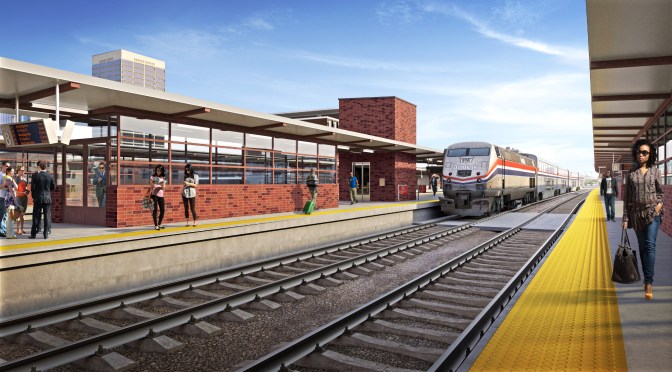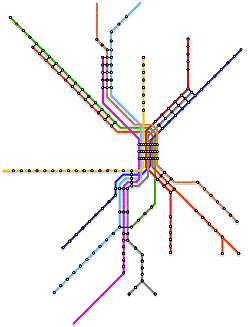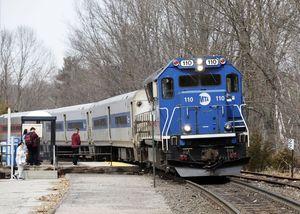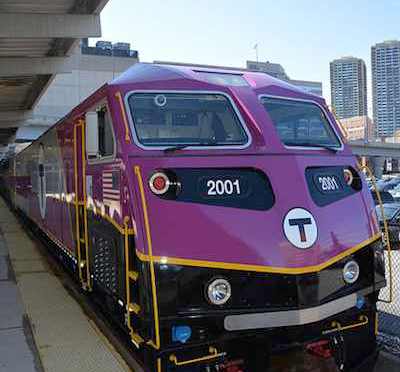July 1, 1900 The New York Central & Hudson River Railroad leases the Boston & Albany for 99 years. Map featured at top, heavy freight at Pittsfield, MA below

June 23, 1831 The Boston & Worcester Railroad Corporation incorporates in Massachusetts. It is the oldest element of the New York Central system in New England.
July 1, 1870 The Kalamazoo & South Haven is leased in perpetuity to the Michigan Central.
July 4, 1870 The first train enters Bloomingdale MI on the Kalamazoo & South Haven Railroad (later MC, NYC, PC, CR).
July 1, 1937 Passenger service ends on the former Kalamazoo & South Haven, now a branch in Michigan of the New York Central.

June 30, 1937 Last day of mail service on the former Kalamazoo & South Haven as the Post Office shifts the contract to motor freight.
July 1, 1935 The New York Central Lines (subsidiary companies) are re-named the New York Central System.
July 1, 1958 The New York Central withdraws from The Pullman Company and begins staffing its own passenger trains.

July 1, 1964 The New York Central opens its first “Flexi-Flo” terminal, in Indianapolis. The system uses steel pipes to transfer loads directly from covered hoppers to trucks.


July 2, 1831 First test of the “Dewitt Clinton” on the Mohawk & Hudson Railroad. Read more about the original NY Central
July 3, 1948 The New York Central issues a report that only 20 per cent of its long-distance passenger trains are diesel powered, but the number is expected to rise to 50% by year’s end.
July 4, 1871 The Detroit, Hillsdale & Indiana (later LS&MS) begins service to Saline MI.
July 4, 1878 The Pittsburgh & Lake Erie Railroad opens between Youngstown and Beaver Falls (some sources say July 3).
June 30, 1889 The Cleveland, Cincinnati, Chicago & St. Louis Railroad (The Big Four) is formed from the merger of the Cleveland, Columbus, Cincinnati & Indianapolis Railway, the Cincinnati, Indianapolis, St. Louis & Chicago Railway and the Indianapolis & St. Louis Railway.
June 30, 1908 Last day steam trains could legally operate south of the Harlem River in New York City. Read about the Harmon Shops where electric locomotives were maintained.

June 30, 1940 Last day “archbar” freight trucks could legally operate in U.S. interchange service, and then only on empty cars returning to their home roads.
June 28, 1832 The Detroit & St. Joseph Railroad (MI) is chartered. Although little is actually constructed, the proposed route will form the basis of the Central Railroad of Michigan [later MC/NYC/PC/CR/NS] charter. The proposed route closely follows the present State of Michigan/Amtrak line from Detroit to Kalamazoo. From Kalamazoo it was planned to go west through Paw Paw to St. Joseph, a route that was never constructed.
June 27, 1859 An express train bound from Chicago wrecks between South Bend and Mishawaka on the Lake Shore & Michigan Southern. The train was passing over a fill that, because a culvert had plugged, was serving as an unintended dam. The saturated earth was not able to support a train. At least five of the crew were killed. Many passengers were swept downstream and drowned, as well as being killed in the wreck. There was an estimated 150 persons on the train, but a death toll has never been determined.
June 27, 1937 First train over Michigan Central’s Michigan Avenue viaduct in Kalamazoo. Auto traffic will not run under the bridge until October.
June 27, 1960 Demolition of the Grand Central Terminal office building begins to allow construction of the Pan Am Building.

June 24, 1878 William H. Vanderbilt gains control of the Michigan Central.
June 24, 1928 The New York Central inaugurates Day Coach De Luxe No. 1 & 2 between New York and Buffalo on a 10 hour 20 minute schedule with 18 stops. It is the first luxury coach train.
June 25, 1844 The Central Railroad of Michigan reaches Albion from the east.
June 25, 1866 The Jackson, Lansing & Saginaw Railroad [later MC, NYC, PC, CR, NS, JAIL] completes its line from Jackson to Lansing via Mason.
June 25, 1902 Michigan Central and Pere Marquette Railroads open Union Station in Lansing.
June 26, 1918 The USRA contracts with the American Railway Express, making it the sole U.S. express operator on U.S. railroads.
June 23, 1954 Robert Heller & Associates present the result of their passenger train study to representatives of the Pennsylvania, New York Central and Baltimore & Ohio railroads. The study finds that passengers are leaving trains for automobiles and airplanes and the railroads are unable to price their services by cost because so many of the rates are frozen by regulations. The railroads decline to follow any of the study’s recommendations to consolidate long-distance trains. Most of the study’s recommendations will be made under Amtrak.
Thanks again Mark Tomlonson
















 Gov. Baker visited a work site in Ashland, Mass., to highlight the MBTA’s recent infrastructure upgrades
Gov. Baker visited a work site in Ashland, Mass., to highlight the MBTA’s recent infrastructure upgrades

